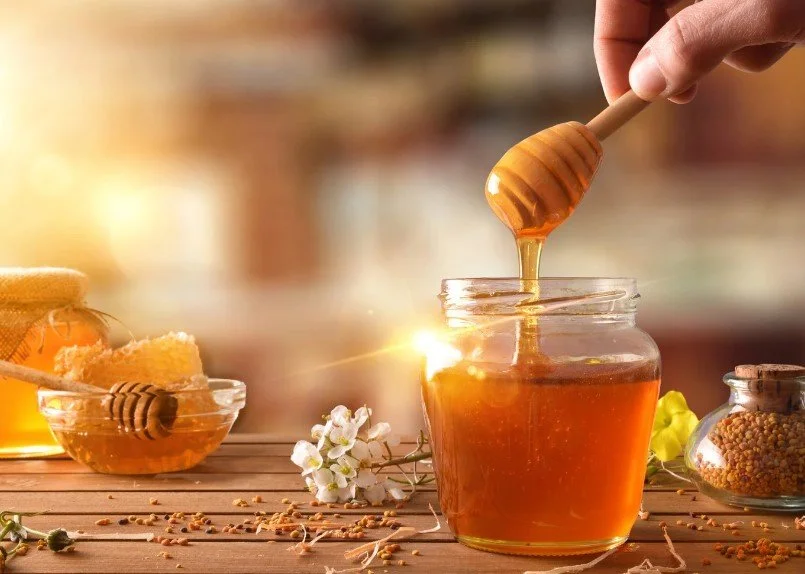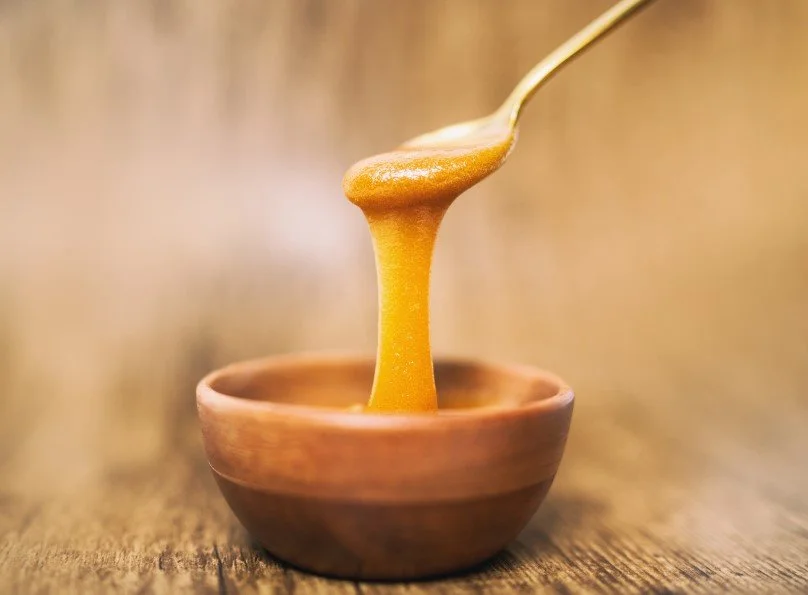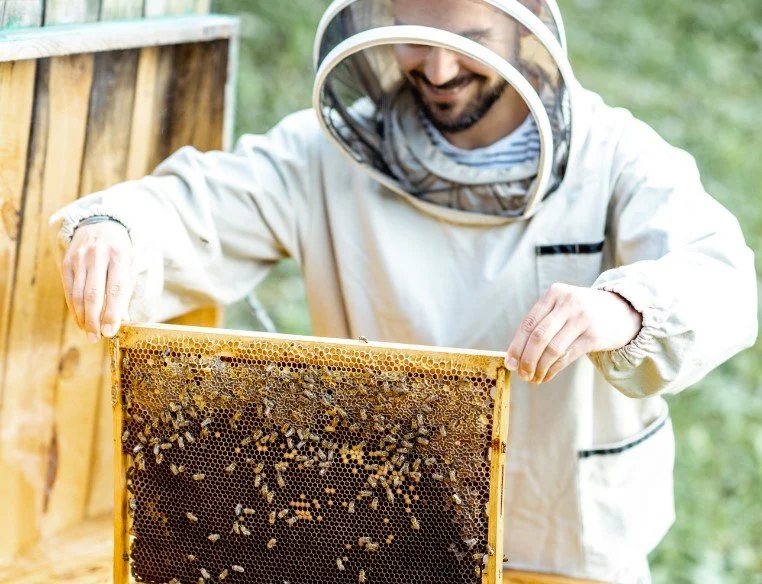The Rise of Raw Honey
Exploring the latest trends in honey reveals a growing consumer preference for natural, health-conscious, and sustainable choices, reflecting a deeper connection with nature and wellness.
One of the most significant trends in the honey industry is the growing demand for raw honey. Unlike processed honey, raw honey is unfiltered and unpasteurized, which allows it to retain its natural enzymes, pollen, and nutrients. This distinction is important to consumers who are increasingly looking for more natural and less processed food choices. Google search data reveals a steady increase in queries related to raw honey, reflecting this shift. This data suggests that as people become more health-conscious, they are seeking out products that offer more natural benefits, with raw honey standing out as a prime example.
Consumers are drawn to raw honey for its purported health benefits, which include antibacterial properties, antioxidants, and potential allergy relief. These health benefits are largely attributed to the presence of natural enzymes and pollen that are often removed during the processing of commercial honey. As awareness of these benefits grows, more people are turning to raw honey as both a food and a natural remedy. This trend not only highlights a shift in consumer preferences but also indicates a broader movement towards holistic health and wellness.
Manuka Honey: The Superfood Sensation
Another standout trend in the honey market is the soaring popularity of Manuka honey. This unique type of honey, native to New Zealand, is renowned for its high levels of methylglyoxal (MGO), a compound known for its potent antibacterial effects. The spike in searches for Manuka honey reflects its growing reputation as a superfood. As people become more interested in natural health remedies, Manuka honey is being used more frequently in skincare, wound healing, and as an immune booster, propelling it to the forefront of the honey market.
The rising interest in holistic and natural health remedies has significantly contributed to the demand for Manuka honey. Its unique properties make it a valuable addition to various health and beauty routines, which is why it has gained such widespread acclaim. From being featured in health blogs to being recommended by wellness experts, Manuka honey has established itself as a key player in the natural health industry. This trend underscores a broader movement towards embracing natural and effective health solutions.
Honey in Skincare
The beauty industry has also seen a surge in the use of honey, particularly in skincare products. Google Trends shows a significant rise in searches for honey-based skincare items, indicating a growing consumer interest in natural beauty solutions. Honey's natural humectant properties make it an excellent moisturizer, while its antibacterial and anti-inflammatory effects help treat acne and soothe skin irritation. As a result, DIY honey masks and commercial honey-infused products are becoming increasingly popular, reflecting a broader trend towards natural and organic beauty solutions.
This growing interest in honey-based skincare is part of a larger movement towards using more natural ingredients in beauty products. Consumers are increasingly wary of synthetic chemicals and are seeking out alternatives that are kinder to their skin and the environment. Honey, with its multifaceted benefits, fits perfectly into this trend. The increased popularity of honey in skincare highlights a shift in consumer preferences towards products that offer both efficacy and a natural origin.
The Appeal of Artisanal and Local Honey
Consumers are increasingly seeking out artisanal and locally produced honey, driven by a desire to support local economies and sustainable practices. This trend is part of a larger movement towards being more discerning about the origins of food. Searches for “local honey” and “artisanal honey” have surged, suggesting that people are becoming more conscientious about their purchasing choices. Local honey is often touted for its potential to alleviate seasonal allergies, as it contains pollen from the local environment, adding to its appeal.
The appeal of artisanal and local honey extends beyond health benefits to include ethical and environmental considerations. Supporting local beekeepers and sustainable practices helps to promote biodiversity and environmental stewardship. Consumers feel good about purchasing products that contribute positively to their communities and the environment. This trend underscores a growing consumer awareness and preference for products that are both healthful and ethically sourced.
Honey as a Sugar Alternative
Health-conscious consumers are increasingly turning to honey as a natural alternative to refined sugar. Google search data indicates a growing interest in recipes that substitute honey for sugar in baking and cooking. This trend is part of a broader movement towards reducing sugar intake and adopting more natural sweeteners. Honey offers a unique flavor profile and additional nutrients that refined sugar lacks, making it an attractive option for those looking to make healthier dietary choices.
The move towards using honey as a sugar alternative is driven by both health and culinary benefits. Honey's natural sweetness and its variety of flavors add depth to dishes, while its nutritional benefits make it a superior choice to refined sugar. As more people become aware of the negative health impacts of excessive sugar consumption, the search for healthier alternatives like honey is likely to continue growing. This trend highlights a significant shift in dietary preferences towards more natural and health-conscious choices.
Innovative Honey Products
Innovation in the honey industry is also capturing consumer interest. New products such as honey sticks, honeycomb, and infused honey varieties (e.g., lavender, cinnamon) are trending. These innovative products cater to a desire for convenience, unique flavors, and versatile uses. Google Trends shows that consumers are excited about these new offerings, which often combine traditional honey with modern twists, reflecting a blend of tradition and innovation in the honey market.
These new honey products are appealing to a broad range of consumers, from foodies looking for new culinary experiences to health-conscious individuals seeking natural remedies. The introduction of infused and specialty honey products offers a fresh take on a traditional staple, expanding its use beyond just a sweetener. This trend signifies a dynamic evolution in the honey industry, where creativity and consumer demand drive the development of new and exciting products.
The Impact of Sustainable Beekeeping
Sustainability is a significant concern for modern consumers, and this extends to honey production. Searches related to sustainable beekeeping and ethical honey sourcing are on the rise. People are becoming more aware of the environmental impact of industrial agriculture and are seeking honey that supports biodiversity and bee health. Sustainable practices in beekeeping not only protect bee populations but also ensure the long-term availability of honey, making it an important factor in consumer decision-making.
The emphasis on sustainable beekeeping reflects a broader awareness of environmental issues and a commitment to supporting practices that protect the planet. Consumers are increasingly looking for products that align with their values, and sustainably produced honey fits this criterion. This trend highlights the growing importance of sustainability in consumer choices and the demand for products that are both ethically and environmentally responsible.
Educational Resources and Beekeeping Interest
Finally, there is a growing interest in beekeeping itself. Google Trends reveals an increase in searches for beekeeping courses, equipment, and beginner guides. This trend indicates that more people are interested in producing their own honey and contributing to environmental sustainability. Beekeeping is seen as a rewarding hobby that offers the dual benefits of supporting bee populations and providing a source of fresh, home-produced honey, reflecting a growing appreciation for self-sufficiency and sustainable living.
The rising interest in beekeeping is part of a larger trend towards reconnecting with nature and understanding where our food comes from. By engaging in beekeeping, individuals can play a direct role in supporting bee populations, which are crucial for pollination and biodiversity. This hands-on involvement also fosters a deeper appreciation for the natural world and the importance of sustainable practices. As more people take up beekeeping, the benefits extend beyond individual enjoyment to broader environmental and community impacts.







